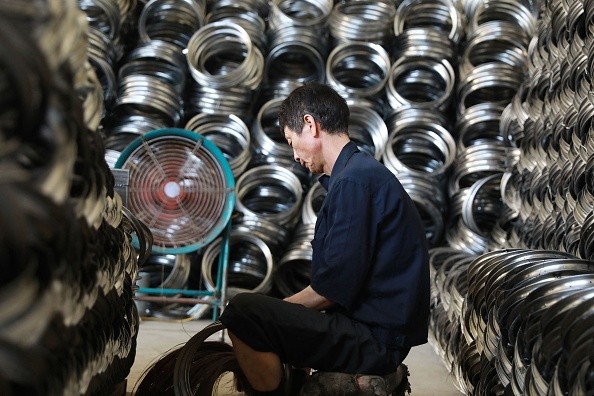Smaller Chinese exporters face a survival challenge due to persistent factory deflation, engaging in intense price wars amid shrinking business. Meanwhile, heightened interest rates abroad and growing trade protectionism constrict demand.

When Kris Lin, the owner of a Chinese lighting factory, received the first order of the year from a close overseas client, he faced a difficult decision: either accept it at a loss or instruct workers not to return after the Lunar New Year.
Speaking to Reuters, Lin said, "It was impossible for me to lose this order," and now has plans to re-start his factory in the eastern city of Taizhou at around half its capacity after the Feb. 10-17 holiday break.
"I could have lost this client forever, and it would have endangered the livelihoods of so many people. If we delay resuming production, people might start doubting our business. If rumors spread, it affects the decisions of our suppliers," continued Lin.
What Is Happening To Producer's Prices?
Producer prices have seen a continuous 15-month decline, severely impacting profit margins and posing threats to industrial output and jobs, further complicating China's economic challenges, including the property crisis and debt crunch.
About 180 million people work in export-related jobs, reported Reuters.
Raymond Yeung, chief China economist at ANZ, says fixing deflation should be a higher policy priority than reaching the expected growth target of around 5% this year.
"Companies cut product prices, then staff salaries. Then consumers won't buy - this could be a vicious cycle," he said.
Profits at China's industrial firms fell 2.3% last year, adding to the 4% drop in COVID-hit 2022. An official survey showed manufacturing activity contracting for a fourth straight month in January, while export orders shrank for the 10th month.
For Lin, that meant the $1.5 million order his client placed was 25% below a similar one last year. It was 10% below production cost.
With sluggish exports, analysts emphasize the need for policymakers to explore alternate strategies to achieve their growth target, highlighting the growing urgency to stimulate household consumption.
"The more 'rebalanced' growth is, the faster that downward pressure on prices and margins will dissipate," said Louis Kuijs, Asia-Pacific chief economist at S&P Global.
Yang Bingben, whose company makes industrial-use valves in the eastern city of Wenzhou, explained to Reuters that he had thought of shutting down the business but keeps it running as he feels indebted to his workers, most of whom are close to retirement age.
Still, he doesn't know how long the factory can survive."This year will be the best of the next decade," Yang said.
© 2025 HNGN, All rights reserved. Do not reproduce without permission.









